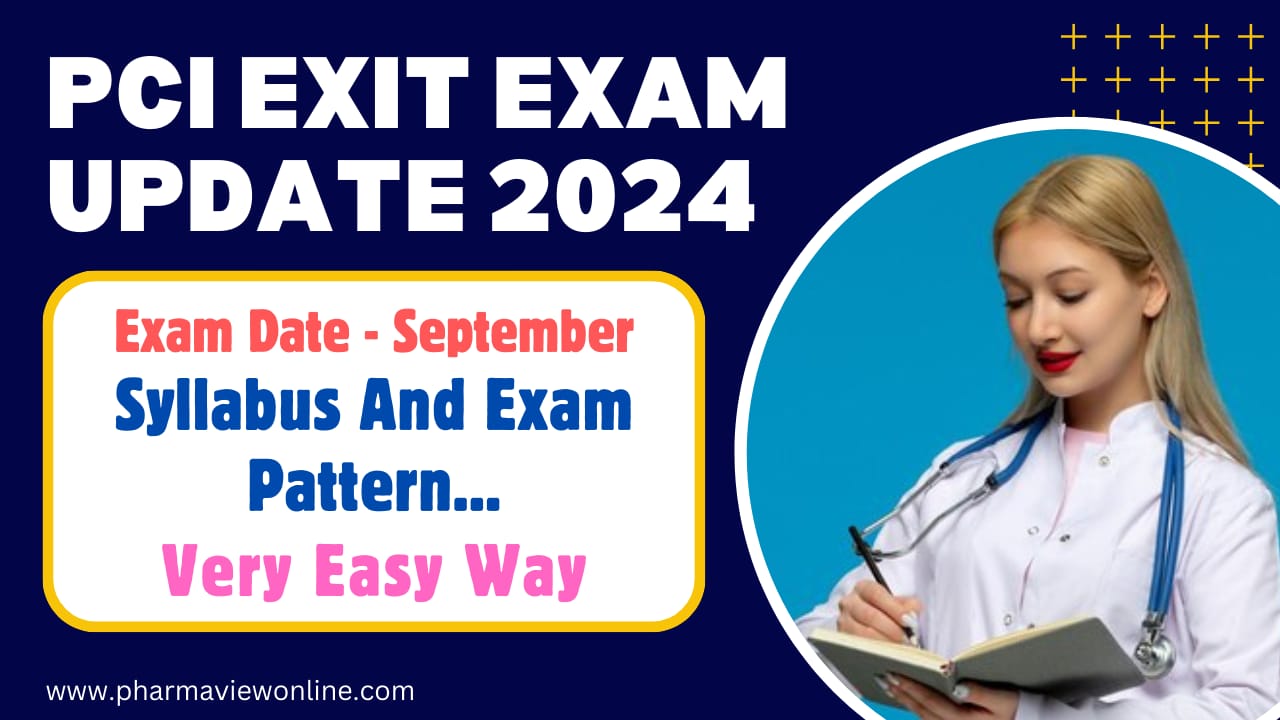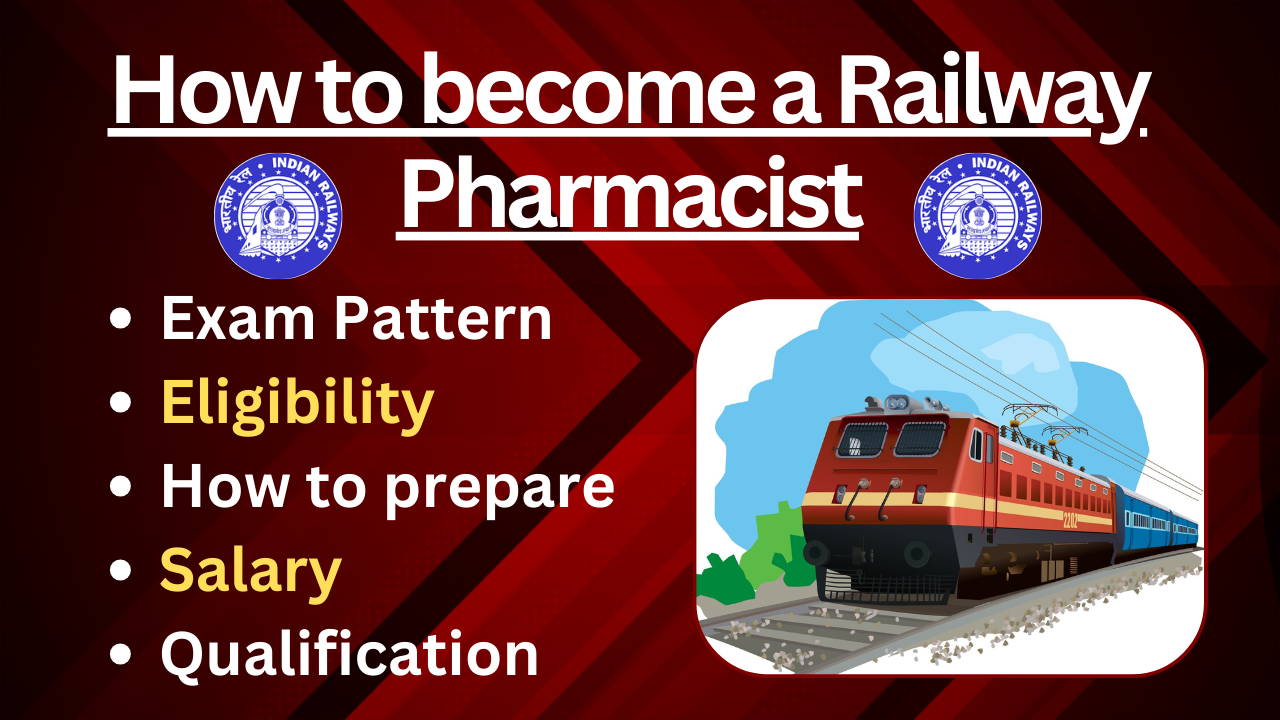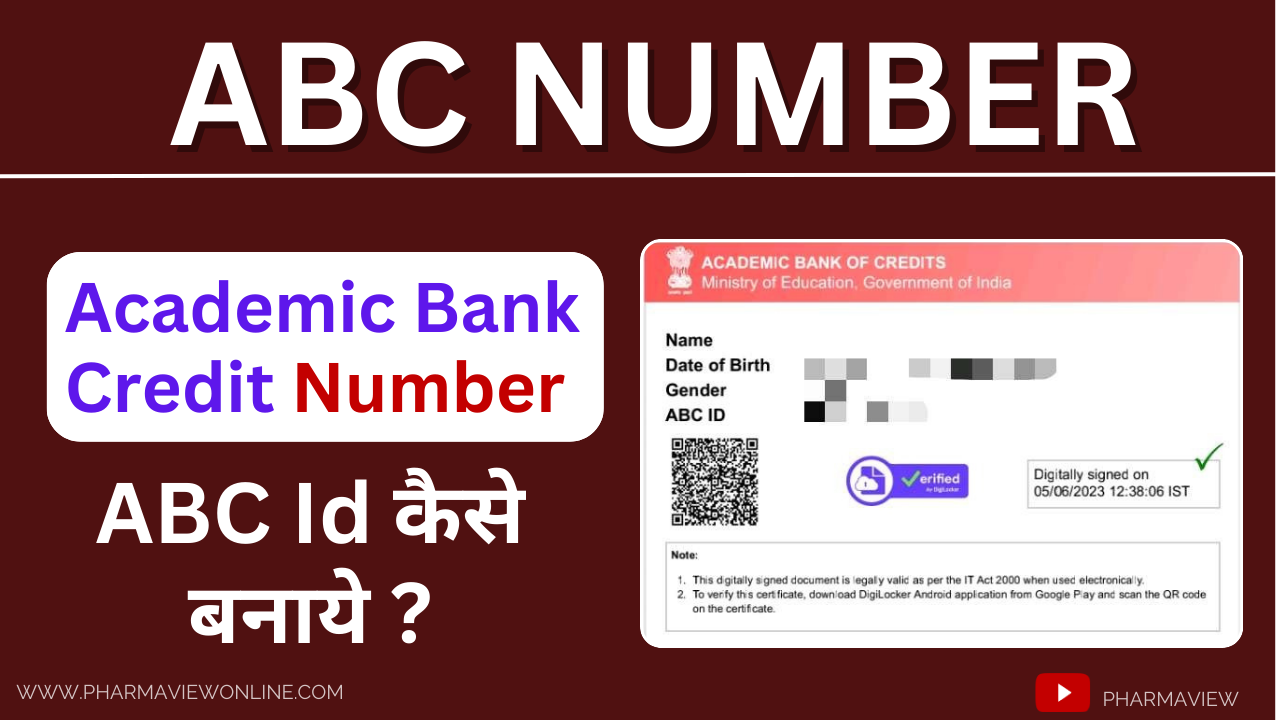D.Pharm Exit Exam Syllabus 2024 is to ensure that a candidate applying for registration as pharmacist with the State Pharmacy Council has undergone pharmacy education and a comprehensive practical training programme in Diploma in Pharmacy (D.Pharm) course as provided in the Education Regulations, 2020 or the regulations that may be in force from time to time in an institution approved by Pharmacy Council of India.
‘डिप्लोमा इन फार्मेसी एग्जिट एग्जामिनेशन’ का अर्थ है निर्धारित प्राधिकारी द्वारा आयोजित परीक्षा
फार्मेसी में डिप्लोमा धारक को पंजीकृत फार्मासिस्ट के रूप में नामांकन और अभ्यास के लिए पात्र घोषित करना.
under section 12 of the Pharmacy Act,1948 and acquired core competencies in dispensing of medicines and other areas of pharmacy practice and to reinforce his discipline, integrity, judgement, skills, knowledge and quest for learning so that after having passed the examination he is able to become a registered pharmacist who is able to exercise his professional skills in addition to carrying his duty and responsibilities professionally.
| Parameter | Details |
|---|---|
| Exam Name | D.Pharm Exit Exam 2024 |
| Why Exam Required | For registration as pharmacist |
| Exam Held in | July to September 2024 |
| Authority | Pharmacy Council Of India |
| Exam Held Under | Diploma in Pharmacy Exit Exam Regulations, 2022 |
| Official Website | pci.nic.in |

Passing Marks And Attempt According D.Pharm Exit Exam Syllabus 2024
D.Pharm Exit Exam Syllabus 2024 Design by Pharmacy Council Of India which have some rule and regulations which is mention below.
- There shall be no restriction on the number of attempts to appear in the examination.
- There is necessary to obtained 50 % marks in the paper to pass the exam After passing the EXIT exam.
- A certificate of eligibility for enrolment and practice shall be issued to the successful candidate which will be presented before the State Pharmacy Council for registration as a pharmacist.
D.Pharm Exit Exam Syllabus 2024 Detailed Info
| Parameter | Remark |
|---|---|
| Frequency Of Exit Exam | Two Time in every Year |
| Regularity Of Exit Exam | Every 6 Monts |
| Attempt | Unlimited Attempt |
| Launguage Of Paper | English |
| Passing Marks | 50% Marks In Each Paper |
| Question Type | Multiple Choice Question (MCQ) |
| Duration of Exam | 3 hrs |
| Negative Marks | NO Negative Marking |
Passing Criteria For D.Pharm Exit Exam Syllabus 2024
| Paper Type | Details |
|---|---|
| Total Paper | 3 Paper |
| Total Subject | 8 Subjects |
| Paper Time | Each Paper shall be of 3 Hours |
| Passing Criteria | Minimum 50% Marks in each paper separately. Note – A candidate shall have to pass all the three papers in the same attempt. if you are not clear any paper. You need to give all three paper in next Attempt, Atteptts are unlimited… |
| Subject Name | 1.Pharmaceutics 2.Pharmacognocy 3.pharmacology 4.pharmaceutical chemistry 5.Biochemistry 6.Hospital & Clinical Pharmacy 7.Law AND Ethics 8.Drug Store and Business manegment (Community Pharmacy & Manegment ) |
D.Pharm Exit Exam Syllabus 2024 Subject wise
| 1.Pharmaceutics |
|---|
| 1.History of the profession of Pharmacy in India in relation to Pharmacy education, industry, pharmacy practice, and various professional associations. Pharmacy as a career. Pharmacopoeia: Introduction to IP, BP, USP, NF and Extra Pharmacopoeia. Salient features of Indian Pharmacopoeia 2 Packaging materials: Types, selection criteria, advantages and disadvantages of glass, plastic, metal, rubber as packaging materials 3.Pharmaceutical aids: Organoleptic (Colouring, flavouring, and sweetening) agents Preservatives: Definition, types with examples and uses. 4.Unit operations: Definition, objectives/applications, principles, construction, and workings of: Size reduction: hammer mill and ball mill Size separation: Classification of powders according to IP, Cyclone separator, Sieves and standards of sieves Mixing: Double cone blender, Turbine mixer, Triple rollr mill and Silverson mixer homogenizer Filtration: Theory of filtration, membrane filter and sintered glass filter Drying: working of fluidized bed dryer and process of freeze drying Extraction: Definition, Classification, method, and applications. 5 Tablets – coated and uncoated, various modified tablets (sustained release, extended-release, fast dissolving, multilayered, etc.) Capsules – hard and soft gelatine capsules 4 Liquid oral preparations – solution, syrup, elixir, emulsion, suspension, dry powder for reconstitution. Topical preparations – ointments, creams, pastes, gels, liniments and lotions, suppositories, and pessaries Nasal preparations, Ear preparations 2 Powders and granules – Insufflations, dusting powders, effervescent powders, and effervescent granules Sterile formulations – Injectables, eye drops and eye ointments Immunological products: Sera, vaccines, toxoids, and their manufacturing methods. 6 Basic structure, layout, sections, and activities of pharmaceutical manufacturing plants Quality control and quality assurance: Definition and concepts of quality control and quality assurance, current good manufacturing practice (cGMP), Introduction to the concept of calibration and validation. 7.Novel drug delivery systems: Introduction, Classification with examples, advantages, and challenges |
| 2.Pharmacognocy |
|---|
| 1.Definition, history, present status and scope of Pharmacognosy. 2 .Classification of drugs: ● Alphabetical ● Taxonomical ● Morphological ● Pharmacological ● Chemical ● Chemo-taxonomical 3.Quality control of crude drugs: ● Different methods of adulteration of crude drugs ● Evaluation of crude drug 4.Brief outline of occurrence, distribution, isolation, identification tests, therapeutic activity and pharmaceutical applications of alkaloids, terpenoids, glycosides, volatile oils, tannins and resins. 5.Biological source, chemical constituents and therapeutic efficacy of the following categories of crude drugs. Laxatives – Aloe, Castor oil, Ispaghula, Senna Cardiotonic – Digitalis, Arjuna Carminatives and G.I. regulators- Coriander, Fennel, Cardamom, Ginger, Clove, Black Pepper, Asafoetida, Nutmeg, Cinnamon Astringents – Myrobalan, Black Catechu, Pale Catechu Drugs acting on nervous system – Hyoscyamus, Belladonna, Ephedra, Opium, Tea leaves, Coffee seeds, Coca Anti-hypertensive – Rauwolfia Anti-tussive – Vasaka, Tolu Balsam Anti-rheumatics – Colchicum seed Anti-tumour – Vinca, Podophyllum Antidiabetics- Pterocarpus, Gymnema Diuretics – Gokhru, Punarnava Anti-dysenteric – Ipecacuanha Antiseptics and disinfectants – Benzoin, Myrrh, Neem, Turmeric Antimalarials- Cinchona, Artemisia Oxytocic- Ergot Vitamins – Cod liver oil, Shark liver oil Enzymes – Papaya, Diastase, Pancreatin, Yeast Pharmaceutical Aids- Kaolin, Lanolin, Beeswax, Acacia, Tragacanth, Sodium alginate, Agar, Guar gum, Gelatine Miscellaneous – Squill, Galls, Ashwagandha, Tulsi, Guggul 6.Plant fibres used as surgical dressings: Cotton, silk, wool and regenerated fibres Sutures – Surgical Catgut and Ligatures 7.● Basic principles involved in the traditional systems of medicine like: Ayurveda, Siddha, Unani and Homeopathy ● Method of preparation of Ayurvedic formulations like: Arista, Asava, Gutika, Taila, Churna, Lehya and Bhasma. 8.Role of medicinal and aromatic plants in national economy and their export potential 9.Herbs as health food: Brief introduction and therapeutic applications of: Nutraceuticals, Antioxidants, Pro-biotics, Pre-biotics, Dietary fibres, Omega-3-fatty acids, Spirulina, Carotenoids, Soya and Garlic. 10.Introduction to herbal formulations 11.Herbal cosmetics: Sources, chemical constituents, commercial preparations, therapeutic and cosmetic uses of: Aloe vera gel, Almond oil, Lavender oil, Olive oil, Rosemary oil, Sandal Wood oil 12.Phytochemical investigation of drugs |
| 3.Pharmaceutical Chemistry |
|---|
| 1.Introduction to Pharmaceutical chemistry: Scope and objectives Sources and types of errors: Accuracy, precision, significant figures Impurities in Pharmaceuticals: Source and effect of impurities in Pharmacopoeial substances, importance of limit test, Principle and procedures of Limit tests for chlorides, sulphates, iron, heavy metals and arsenic 2.Volumetric analysis: Fundamentals of volumetric analysis, Acid-base titration, non-aqueous titration, precipitation titration, complexometric titration, redox titration Gravimetric analysis: Principle and method. 3.Inorganic Pharmaceuticals: Pharmaceutical formulations, market preparations, storage conditions and uses of ● Haematinics: Ferrous sulphate, Ferrous fumarate, Ferric ammonium citrate, Ferrous ascorbate, Carbonyl iron ● Gastro-intestinal Agents: Antacids :Aluminium hydroxide gel, Magnesium hydroxide, Magaldrate, Sodium bicarbonate, Calcium Carbonate, Acidifying agents, Adsorbents, Protectives, Cathartics ● Topical agents: Silver Nitrate, Ionic Silver, Chlorhexidine Gluconate, Hydrogen peroxide, Boric acid, Bleaching powder, Potassium ermanganate ● Dental products: Calcium carbonate, Sodium fluoride, Denture cleaners, Denture adhesives, Mouth washes ● Medicinal gases: Carbon dioxide, nitrous oxide, oxygen 4.Drugs Acting on Central Nervous System Anaesthetics: Thiopental Sodium, Ketamine Hydrochloride, Propofol ● Sedatives and Hypnotics: Diazepam, Alprazolam, Nitrazepam, Phenobarbital* ● Antipsychotics: Chlorpromazine Hydrochloride, Haloperidol, Risperidone, Sulpiride, Olanzapine, Quetiapine, Lurasidone ● Anticonvulsants: Phenytoin, Carbamazepine, Clonazepam, Valproic Acid, Gabapentin, Topiramate, Vigabatrin, Lamotrigine ● Anti-Depressants: Amitriptyline Hydrochloride, Imipramine Hydrochloride, Fluoxetine*, Venlafaxine, Duloxetine, Sertraline, Citalopram, Escitalopram, Fluvoxamine, Paroxetine 5.Drugs Acting on Autonomic Nervous System ● Sympathomimetic Agents: Direct Acting: NorEpinephrine, Epinephrine, Phenylephrine, 9 19 | P a g e Dopamine, Terbutaline, Salbutamol (Albuterol), Naphazoline, Tetrahydrozoline. Indirect Acting Agents: Hydroxy Amphetamine, Pseudoephedrine. Agents With Mixed Mechanism: Ephedrine, Metaraminol ● Adrenergic Antagonists: Alpha Adrenergic Blockers: Tolazoline, Phentolamine ● Phenoxybenzamine, Prazosin. Beta Adrenergic Blockers: Propranolol, Atenolol, Carvedilol ● Cholinergic Drugs and Related Agents: Direct Acting Agents: Acetylcholine, Carbachol, And Pilocarpine. Cholinesterase Inhibitors: Neostigmine, Edrophonium Chloride, Tacrine Hydrochloride, Pralidoxime Chloride, Echothiopate Iodide ● Cholinergic Blocking Agents: Atropine Sulphate, Ipratropium Bromide Synthetic Cholinergic Blocking Agents: Tropicamide, Cyclopentolate Hydroch 6.Drugs Acting on Cardiovascular System ● Anti-Arrhythmic Drugs: Quinidine Sulphate, Procainamide Hydrochloride, Verapamil, Phenytoin Sodium, Lidocaine Hydrochloride, Lorcainide Hydrochloride, Amiodarone and Sotalol ● Anti-Hypertensive Agents: Propranolol, Captopril*, Ramipril, Methyldopate Hydrochloride, Clonidine Hydrochloride, Hydralazine Hydrochloride, Nifedipine, ● Antianginal Agents: Isosorbide Dinitrate 7.Diuretics: Acetazolamide, Frusemide*, Bumetanide, Chlorthalidone, Benzthiazide, Metolazone, Xipamide, Spironolactone Hypoglycemic Agents: Insulin and Its Preparations, Metformin, Glibenclamide, Glimepiride, Pioglitazone, Repaglinide, Gliflozins, Gliptins 8.Analgesic And Anti-Inflammatory Agents: Morphine Analogues, Narcotic Antagonists; Nonsteroidal AntiInflammatory Agents (NSAIDs) – Aspirin, Diclofenac, Ibuprofen, Piroxicam, Celecoxib, Mefenamic Acid, Paracetamol*, Aceclofenac 9.Anti-Infective Agents ● Antifungal Agents: Amphotericin-B, Griseofulvin, Miconazole, Ketoconazole, Itraconazole, Fluconazole, Naftifine Hydrochloride ● Urinary Tract Anti-Infective Agents: Norfloxacin, Ciprofloxacin, Ofloxacin, Moxifloxacin, ● Anti-Tubercular Agents: INH, Ethambutol, Para Amino Salicylic Acid, Pyrazinamide, Rifampicin, Bedaquiline, Delamanid, Pretomanid* ● Antiviral Agents: Amantadine Hydrochloride, Idoxuridine, Acyclovir, Foscarnet, Zidovudine, Ribavirin, Remdesivir, Favipiravir ● Antimalarials: Quinine Sulphate, Chloroquine Phosphate, Primaquine Phosphate, Mefloquine, Cycloguanil, Pyrimethamine, Artemisinin ● Sulfonamides: Sulfanilamide, Sulfadiazine, Sulfametho xazole, Sulfacetamide, Mafenide Acetate, Cotrimoxazole, Dapsone* 10.Antibiotics: Penicillin G, Amoxicillin, Cloxacillin, Streptomycin, Tetracyclines: Doxycycline, Minocycline, Macrolides: Erythromycin, Azithromycin, Miscellaneous: Chloramphenicol Clindamycin 13 Anti-Neoplastic Agents: Cyclophosphamide, Busulfan, Mercaptopurine, Fluorouracil, Methotrexate, Dactinomycin, Doxorubicin Hydrochloride, Vinblastine Sulphate, Cisplatin*, Dromostanolone Propionate |
| 4.Pharmacology |
|---|
| 1.General Pharmacology Introduction and scope of Pharmacology Various routes of drug administration – advantages and disadvantages Drug absorption – definition, types, factors affecting drug absorption Bioavailability and the factors affecting bioavailability Drug distribution – definition, factors affecting drug distribution Biotransformation of drugs – Definition, types of biotransformation reactions, factors influencing drug metabolisms Excretion of drugs – Definition, routes of drug excretion General mechanisms of drug action and factors modifying drug action 2.Drugs Acting on the Peripheral Nervous System Steps involved in neurohumoral transmission Definition, classification, pharmacological actions, dose, indications, and contraindications of a) Cholinergic drugs b) Anti-Cholinergic drugs c) Adrenergic drugs d) Anti-adrenergic drugs e) Neuromuscular blocking agents f) Drugs used in Myasthenia gravis g) Local anaesthetic agents h) Non-Steroidal Anti-Inflammatory drugs (NSAIDs) 3.Drugs Acting on the Eye Definition, classification, pharmacological actions, dose, indications and contraindications of Miotics Mydriatics Drugs used in Glaucoma 4.Drugs Acting on the Central Nervous System Definition, classification, pharmacological actions, dose,indications, and contraindications of General anaesthetics Hypnotics and sedatives Anti-Convulsant drugs Anti-anxiety drugs Anti-depressant drugs Anti-psychotics Nootropic agents Centrally acting muscle relaxants Opioid analgesics 5.Drugs Acting on the Cardiovascular System Definition, classification, pharmacological actions, dose, indications, and contraindications of Anti-hypertensive drugs Anti-anginal drugs Anti-arrhythmic drugs Drugs used in atherosclerosis and Congestive heart failure Drug therapy for shock 6 Drugs Acting on Blood and Blood Forming Organs Definition, classification, pharmacological actions, dose, indications, and contraindications of Hematinic agents Anti-coagulants Anti-platelet agents Thrombolytic drugs 7 Definition, classification, pharmacological actions, dose, indications, and contraindications of Bronchodilators Expectorants Anti-tussive agents Mucolytic agents 8.Drugs Acting on the Gastro Intestinal Tract Definition, classification, pharmacological actions, dose, indications, and contraindications of Anti-ulcer drugs Anti-emetics Laxatives and purgatives Anti-diarrheal drugs 9 Drugs Acting on the Kidney Definition, classification, pharmacological actions, dose, indications, and contraindications of Diuretics Anti-Diuretics 10 Hormones and Hormone Antagonists Physiological and pathological role and clinical uses of Thyroid hormones Anti-thyroid drugs Parathormone Calcitonin Vitamin D Insulin Oral hypoglycemic agents Estrogen Progesterone Oxytocin Corticosteroids 11.Autocoids Physiological role of Histamine, 5 HT and Prostaglandins Classification, clinical uses, and adverse effects of antihistamines and 5 HT antagonists 12 Chemotherapeutic Agents: Introduction, basic principles of chemotherapy of infections, infestations and neoplastic diseases, Classification, dose, indication and contraindications of drugs belonging to following classes: Penicillins Cephalosporins Aminoglycosides Fluoroquinolones Macrolides Tetracyclines Sulphonamides Anti-tubercular drugs Anti-fungal drugs Anti-viral drugs Anti-amoebic agents Anthelmintics Anti-malarial agents Anti-neoplastic agents 13 Biologicals Definition,type |
| 5.Biochemistry |
|---|
| 1.Intro Of Biochemistry 2 Carbohydrates Definition, classification with examples, chemicalproperties Monosaccharides – Structure of glucose, fructose, andgalactose Disaccharides – structure of maltose, lactose, andsucrose Polysaccharides – chemical nature of starch andglycogen Qualitative tests and biological role of carbohydrates 3 Proteins Definition, classification of proteins based on composition and solubility with examples Definition, classification of amino acids based onchemical nature and nutritional requirements with examples Structure of proteins (four levels of organization of protein structure) Qualitative tests and biological role of proteins and amino acids Diseases related to malnutrition of proteins. 4 Lipids Definition, classification with examples Structure and properties of triglycerides (oils and fats) Fatty acid classification – Based on chemical and nutritional requirements with examples Structure and functions of cholesterol in the body Lipoproteins – types, composition and functions in the body Qualitative tests and functions of lipids 5 Nucleic acids Definition, purine and pyrimidine bases Components of nucleosides and nucleotides with examples Structure of DNA (Watson and Crick model), RNA and their functions 6 Enzymes Definition, properties and IUB and MB classification Factors affecting enzyme activity Mechanism of action of enzymes, Enzyme inhibitors Therapeutic and pharmaceutical importance of enzymes 7 Vitamins Definition and classification with examples Sources, chemical nature, functions, coenzyme form, recommended dietary requirements, deficiency diseases of fat-and water-soluble vitamins 8 Metabolism (Study of cycle/pathways without chemical structures) Metabolism of Carbohydrates: Glycolysis, TCA cycle and glycogen metabolism, regulation of blood glucose level. Diseases related to abnormal metabolism of Carbohydrates Metabolism of lipids: Lipolysis, β-oxidation of Fatty acid(Palmitic acid) ketogenesis and ketolysis. Diseases related to abnormal metabolism of lipids such as Ketoacidosis, Fatty liver, Hypercholesterolemia Metabolism of Amino acids (Proteins): General reactions of amino acids and its significance– Transamination, deamination, Urea cycle and decarboxylation. Diseases related to abnormal metabolism of amino acids, Disorders of ammonia metabolism, phenylketonuria, alkaptonuria and Jaundice. Biological oxidation: Electron transport chain and Oxidative phosphorylation. 9 Minerals: Types, Functions, Deficiency diseases, recommended dietary requirements 10 Water and Electrolytes Distribution, functions of water in the body Water turnover and balance Electrolyte composition of the body fluids, Dietary intake of electrolyte and Electrolyte balance Dehydration, causes of dehydration and oral rehydration therapy 11 Introduction to Biotechnology 12.Organ function tests Functions of kidney and routinely performed tests to assess the functions of kidney and their clinical significances Functions of liver and routinely performed tests to assess the functions of liver and their clinical significances Lipid profile tests and its clinical significances 13 Introduction to Pathology of Blood and Urine Lymphocytes and Platelets, their role in health and disease Erythrocytes – Abnormal cells and their significance Normal and Abnormal constituents of Urine and their significance |
| 6.Hospital and clinical pharmacy |
|---|
| Same as A Diploma Syllabus |
| 7.Law and ethics |
|---|
| Same as A Diploma Syllabus |
| 8.Community Pharmacy And Manegment |
|---|
| Same as A Diploma Syllabus |






Nice
Council kab h
Thanks to inform us❤️